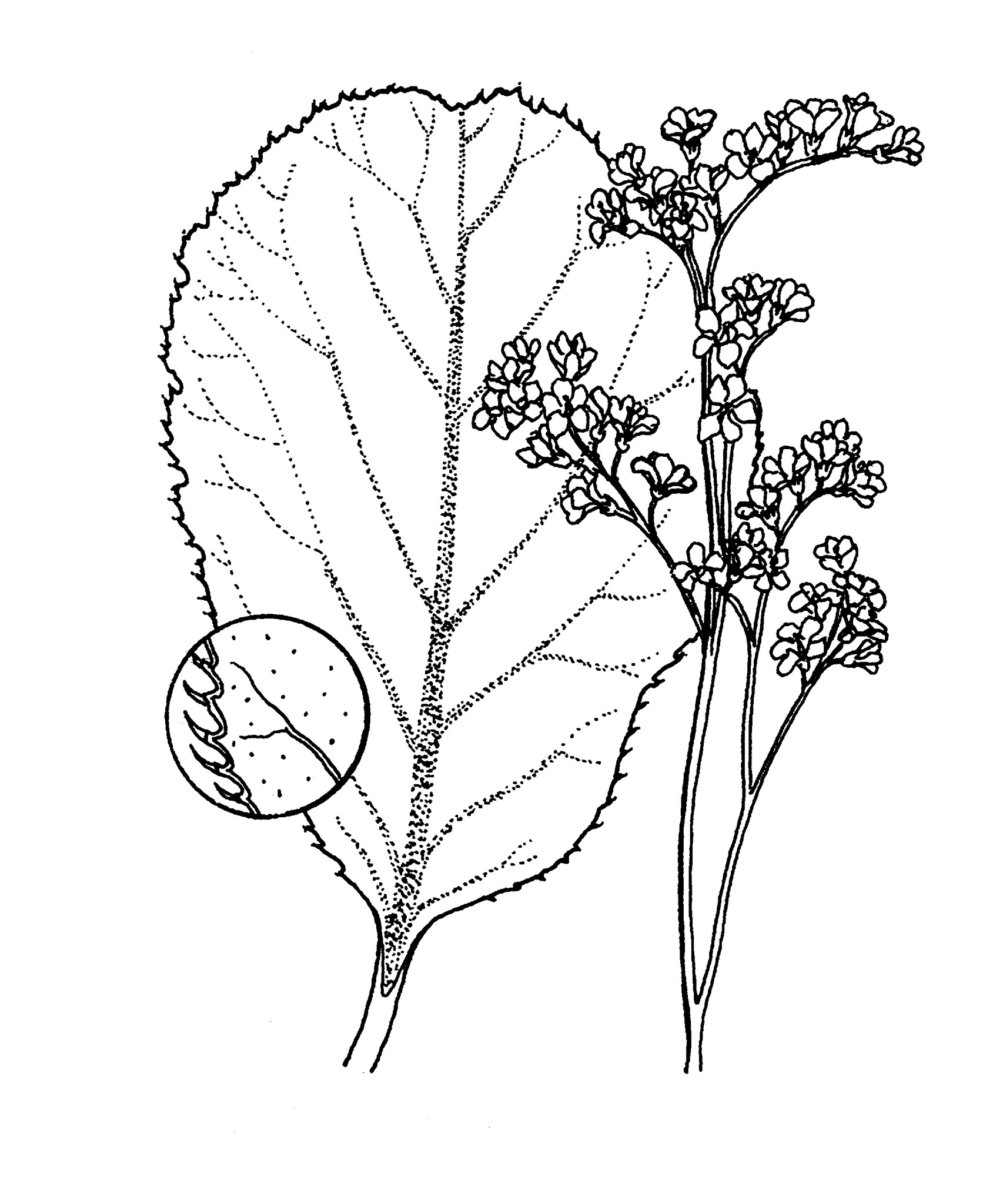
Commemorating Carl von Bergen (1704–59), German botanist.
Perennial rhizomatous herbs. Leaves alternate in a large basal rosette, leathery, waxy on the surface, margins entire, wavy and with extremely fine teeth, stalks widest at the base and forming a sheath. Flowers in clusters. Sepals fused, cup-like, with nectar in the base. Stamens 10. Carpels 2, united at the base. Fruit a capsule, splitting at the tip.
Grown for the bold, mostly evergreen foliage and attractive pink flower clusters.The species exhibit a range of flowering times.
Several species are currently incorrectly named and the commonly grown B. ×schmidtii is quite variable.
6-7 temperate to tropical E Asian species.
Division or seed.
Some species have medicinal properties and have also been used as a source of tannin.
Flowers perigynous; carpels more or less free from one another and the perigynous zone.
Yeo (1966, 1971). Cultivars: Yeo (1971).
Source: (2002). Saxifragaceae. In: . Horticultural Flora of South-eastern Australia. Volume 3. Flowering plants. Dicotyledons. Part 2. The identification of garden and cultivated plants. University of New South Wales Press.

Leaves with enhanced maroon colourings in winter, plum red below. Flowers deep magenta and mostly semi-double on short stems. Raised g. Arends in 1950. ['Evening Glow']
White-flowered plant released by Alan Bloom, uk.
Name and plant origin unlocated. Possibly a name of no botanical standing.
Flowers pure white, becoming pinkish with age. Raised g. Arends, 1950. ['Silver Light'